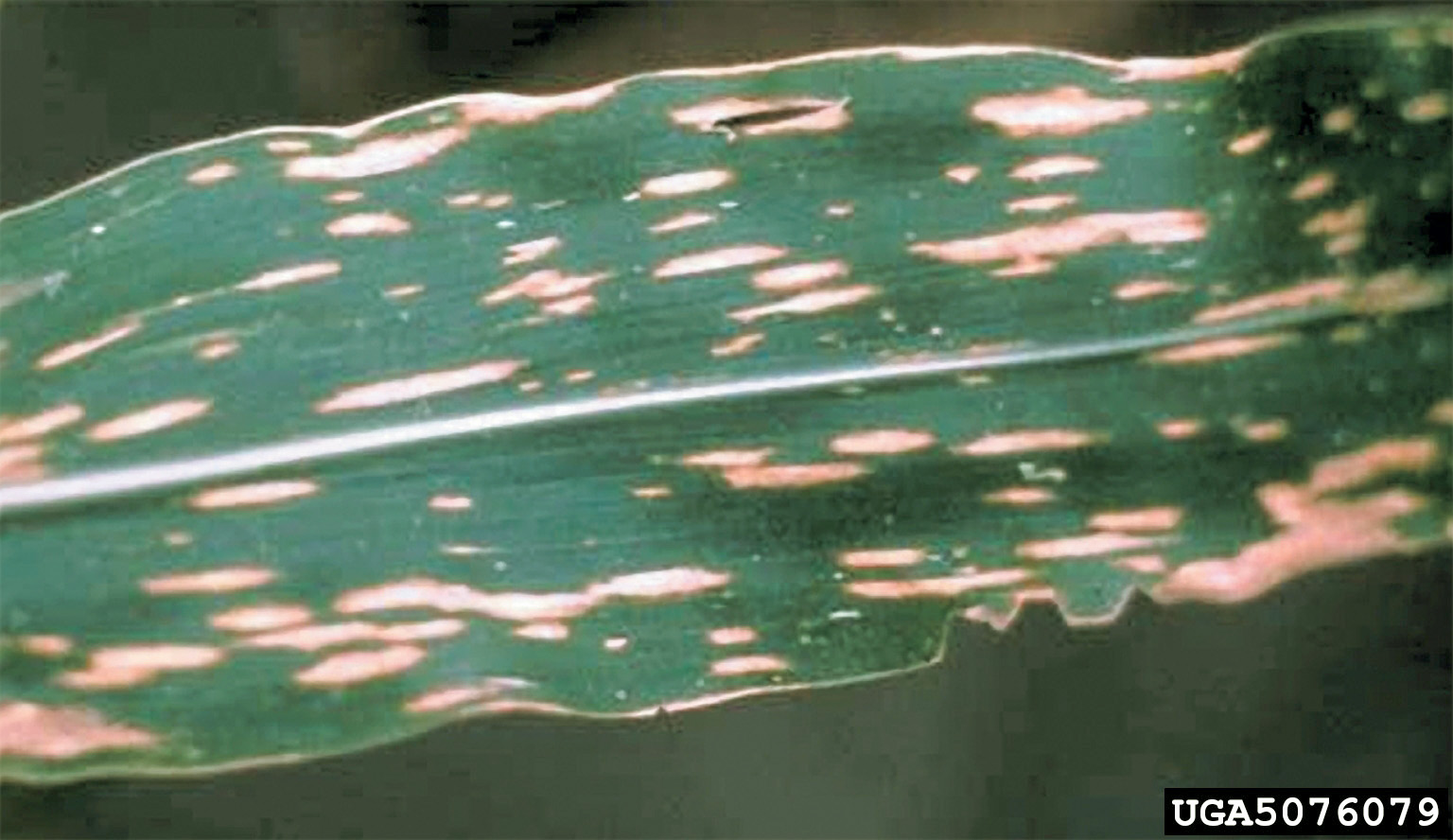Southern Corn Leaf Blight
Return to diseases
Southern corn leaf blight (Cochliobolus heterostrophus) lesions are variable in size, depending on the race of the pathogen present and also the variety. Lesions caused by race 0 are elongated and restricted by veins, ¾ to 2 inches in length, and tan-colored; a darkened border may be present. Lesions caused by the T race are small, circular to oval in size, and have a reddish brown border. In severe outbreaks, blighting and death of foliage are common and husks will be damaged as well. The disease is most active after silking during periods of moderate-to-warm temperatures and high moisture.

Southern corn leaf blight
(Photo: David B. Langston, University of Georgia, Bugwood.org)
Management:
- Crop rotation, incorporation of corn residues, resistant varieties, and fungicides (on later plantings if disease is found on earlier plantings or if disease is active before silking).
